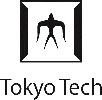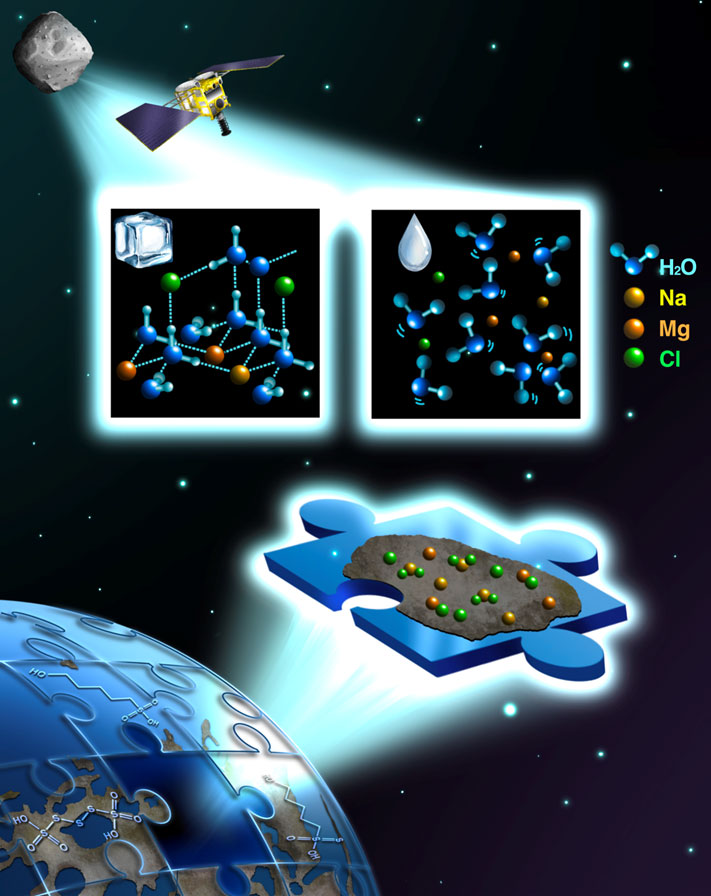Press Releases








JAMSTEC
KYUSHU UNIVERSITY
AIST
HOKKAIDO UNIVERSITY
Thermo Fisher Scientific K.K.
HORIBA Advanced Techno, Co., Ltd.
HORIBA TECHNO SERVICE CO., LTD.
Tokyo Institute of Technology
SCHOOL OF SCIENCE, THE UNIVERSITY OF TOKYO
Discovery of primordial "salts" and organic sulfur molecules in the asteroid Ryugu
1. Key Points
- ◆
- When various solvents were used to extract the soluble components of the samples collected from the surface asteroid Ryugu; the hot water extract, which reflects the most soluble components, contained a large amount of sodium ions (Na+).
- ◆
- A wide variety of organic sulfur molecules were newly identified using ion chromatography/ultra-high-resolution mass spectrometry. The study traced chemical evolution through water-organic matter-mineral reactions, from primitive organic matter to molecular groups with hydrophilic and amphipathic properties.
- ◆
- The results of the study provide important insights into how materials existed in the solar system before the formation of the Earth, as well as the origin and evolution of materials that make up the Earth, the oceans, and life.
2. Overview
An international joint research group consisting of Senior Scientist Toshihiro Yoshimura and Deputy Director, Principal Scientist Yoshinori Takano of the Biogeochemistry Research Center at the Japan Agency for Marine-Earth Science and Technology, Professor Hiroshi Naraoka of the Faculty of Science at Kyushu University and others, together with researchers from the School of Science of the University of Tokyo, the National Institute of Advanced Industrial Science and Technology, HORIBA Advanced Techno, Co., Ltd., HORIBA Techno Service Co., Ltd., Thermo Fisher Scientific Inc., Hokkaido University, and Tokyo Institute of Technology, extracted soluble components in samples from the asteroid Ryugu, performed detailed chemical analyses and revealed the composition, content, and other information.
The asteroid Ryugu is one of the primordial celestial bodies that retain the chemical composition of the entire solar system before the birth of the Earth. Although initial analysis by the Hayabusa2 team previously revealed a variety of properties, contents, history, and other information, the material information of the ionic components among the soluble components was unclear.
Thus, this research group extracted soluble components from samples of the asteroid Ryugu and performed detailed chemical analyses at the inorganic and organic molecular levels. This revealed that, the hot water extract, which reflects the most soluble components, contains a very large amount of sodium ions (Na+). Sodium ions act as electrolytes that stabilize the surface charge of minerals and organic materials, and some of them are believed to precipitate as sodium salts (salts) by bonding to organic and other molecules. Various organic sulfur molecules were also found in the extract. Changes in chemical state due to dissolution in the water in the asteroid Ryugu likely resulted in chemical evolution into a variety of organic sulfur molecules.
These results not only shed light on the material evolution of the early solar system but also provide important insights to answer the critical question of how the chemical processes were controlled that ultimately led to the birth of life.
The findings of this study will be published in the scientific journal "Nature Communications" on September 18, 2023 (Japan time).

The asteroid explorer "Hayabusa2" delivers samples containing primordial salts and new sulfur molecules present on the asteroid Ryugu to Earth (©JAMSTEC).
The water (H2O) contained in the asteroid Ryugu was probably repeatedly frozen and thawed during its evolution within the solar system, eluting and precipitating salts contained in minerals. Analysis of the soluble components will shed light on how the first "salts" were formed.
- Japan Agency for Marine-Earth Science and Technology (JAMSTEC)
- Department of Earth and Planetary Sciences, Kyushu University
- Geological Survey of Japan (GSJ), National Institute of Advanced Industrial Science and Technology (AIST)
- Helmholtz Zentrum München, Analytical BioGeoChemistry
- Technische Universität München, Analytische Lebensmittel Chemie
- Institute of Low Temperature Science (ILTS), Hokkaido University
- Solar System Exploration Division, NASA Goddard Space Flight Center
- HORIBA Advanced Techno, Co., Ltd.,
- HORIBA Techno Service Co., Ltd.
- Department of Earth and Planetary Sciences, Nagoya University
- Thermo Fisher Scientific Inc.
- Department of Earth and Planetary Sciences, Tokyo Institute of Technology
- Creative Research Institution (CRIS), Hokkaido University
- Department of Earth Science, Tohoku University
- Department of Earth and Planetary Sciences, Kyoto University
- Earth and Planetary Systems Science Program, Hiroshima University
- Institute of Space and Astro-nautical Science, Japan Aerospace Exploration Agency (ISAS/JAXA)
- Kanagawa Institute of Technology
- UTokyo Organization for Planetary and Space Science (UTOPS), University of Tokyo ※ Co-first authorship
contacts
- For this study
-
Toshihiro Yoshimura, Researcher, Research Institute for Marine Resources Utilization (MRU) Biogeochemistry Research Center (BGC) Bioelement Dynamics Research Group, JAMSTEC
Yoshinori Takano, Principal Researcher, Research Institute for Marine Resources Utilization (MRU) Biogeochemistry Research Center (BGC), JAMSTEC
- For press release
-
Press Office, Marine Science and Technology Strategy Department, JAMSTEC
Kyushu University Public Relations Office
National Institute of Advanced Industrial Science and Technology
Branding and Public Relations Department Media Relations Office
Public Relations & Communications Division, Office of Public Relations and Social Collaboration, Hokkaido University
Thermo Fisher Scientific Japan Group
Public Relations
HORIBA Advanced Techno, Co.,Ltd.;
HORIBA TECHNO SERVICE Co., Ltd.; HORIBA, Ltd. Corporate Communication Office
Public Relations Division
Tokyo Institute of Technology
Office of Research Strategy and Development School of Science, The University of Tokyo